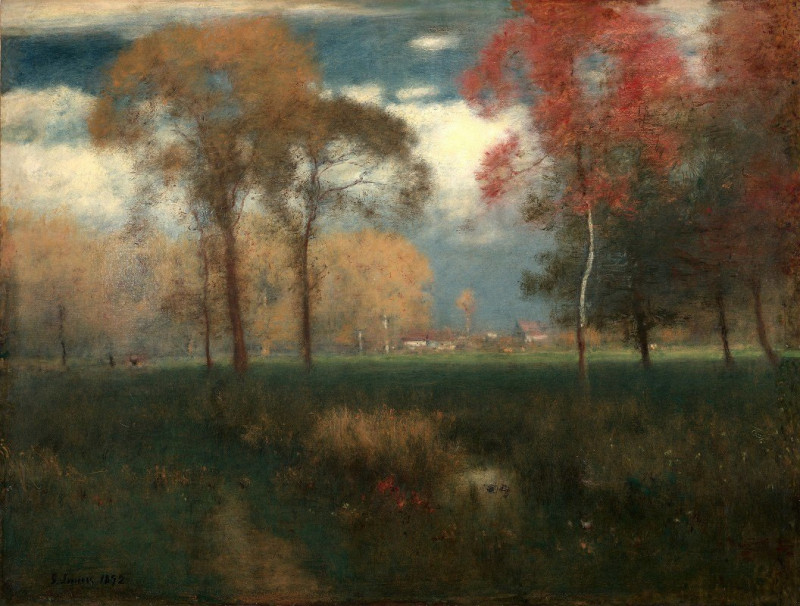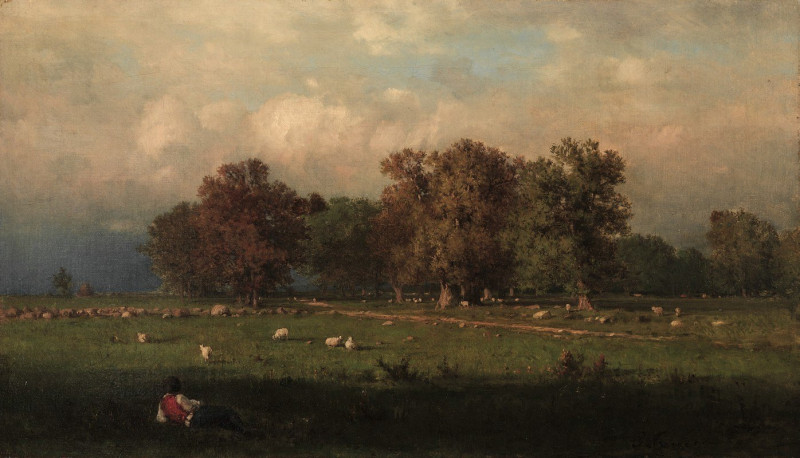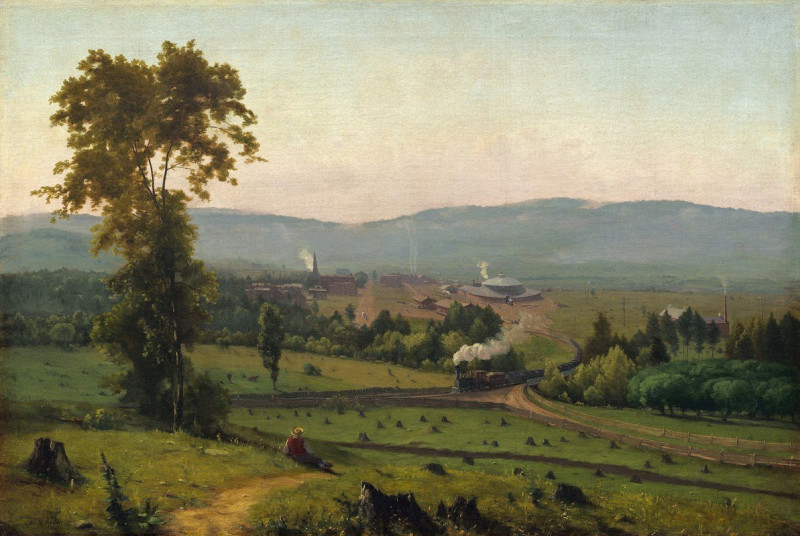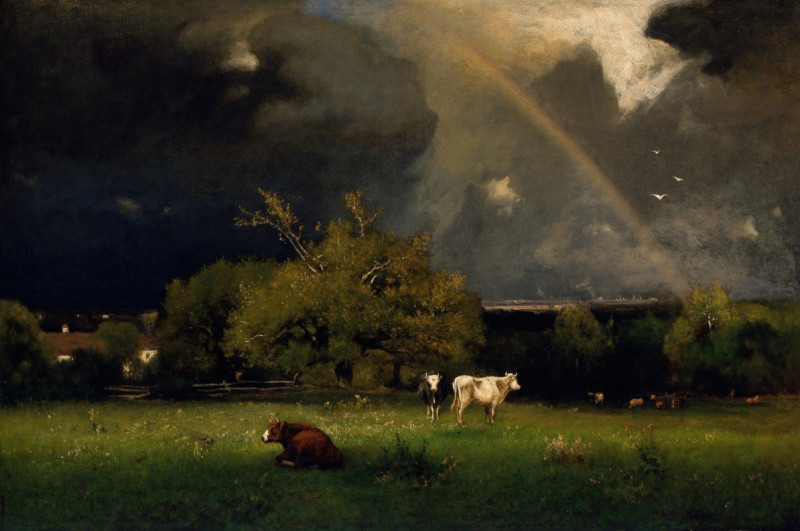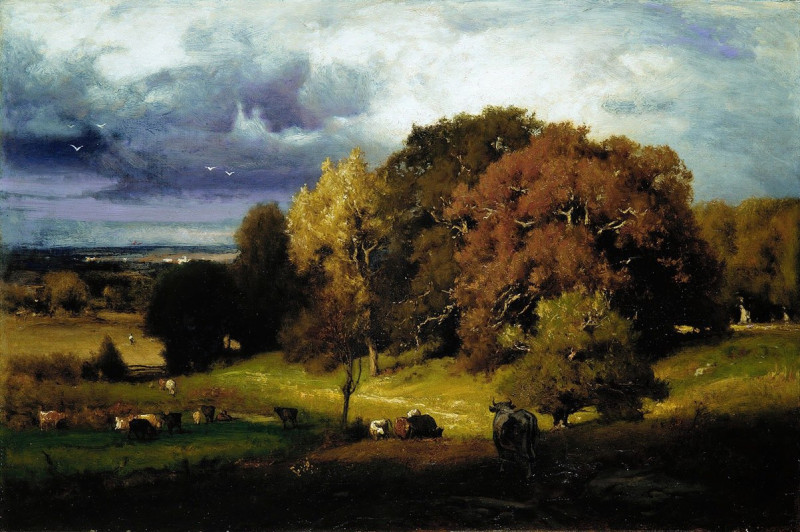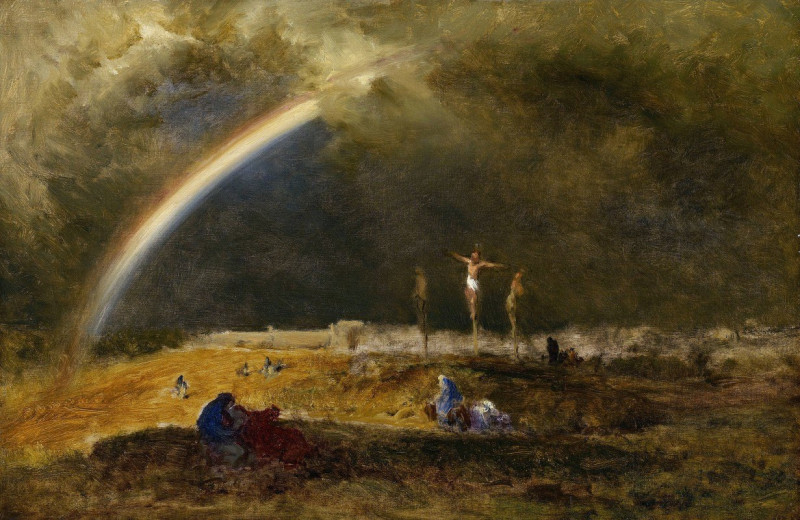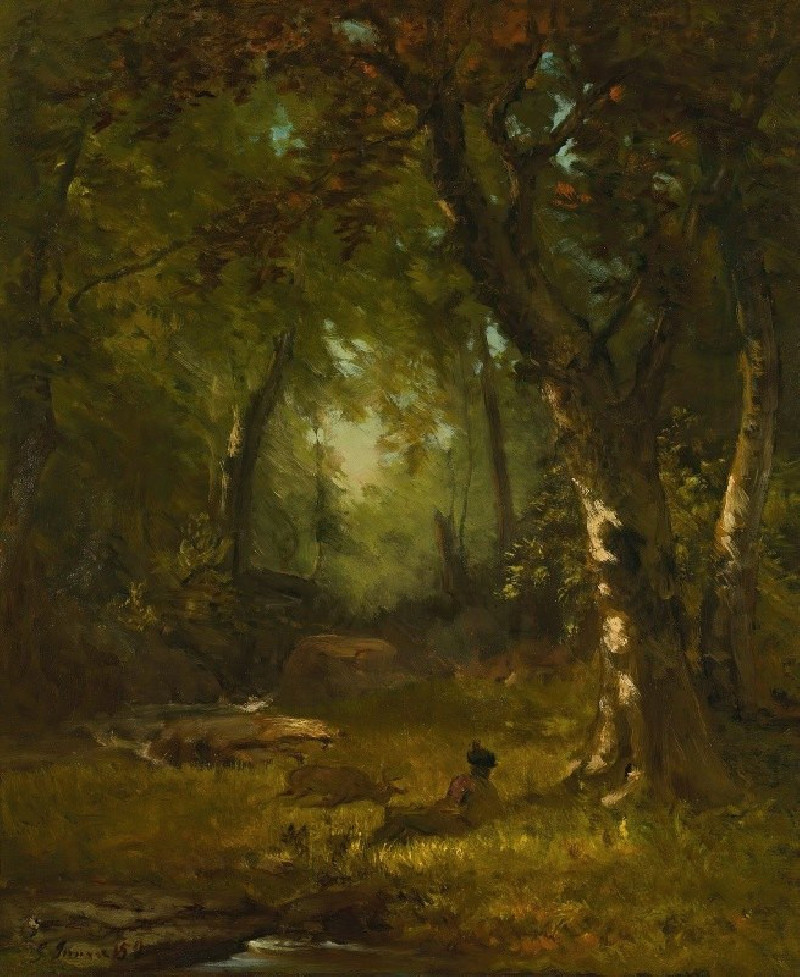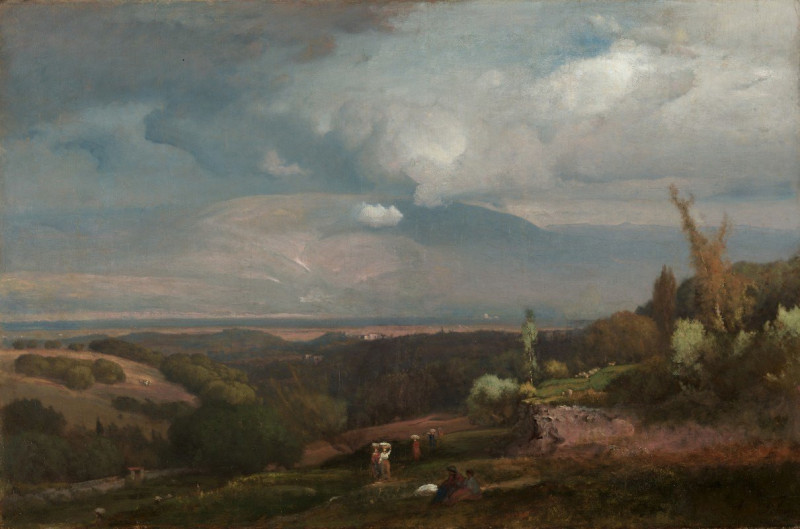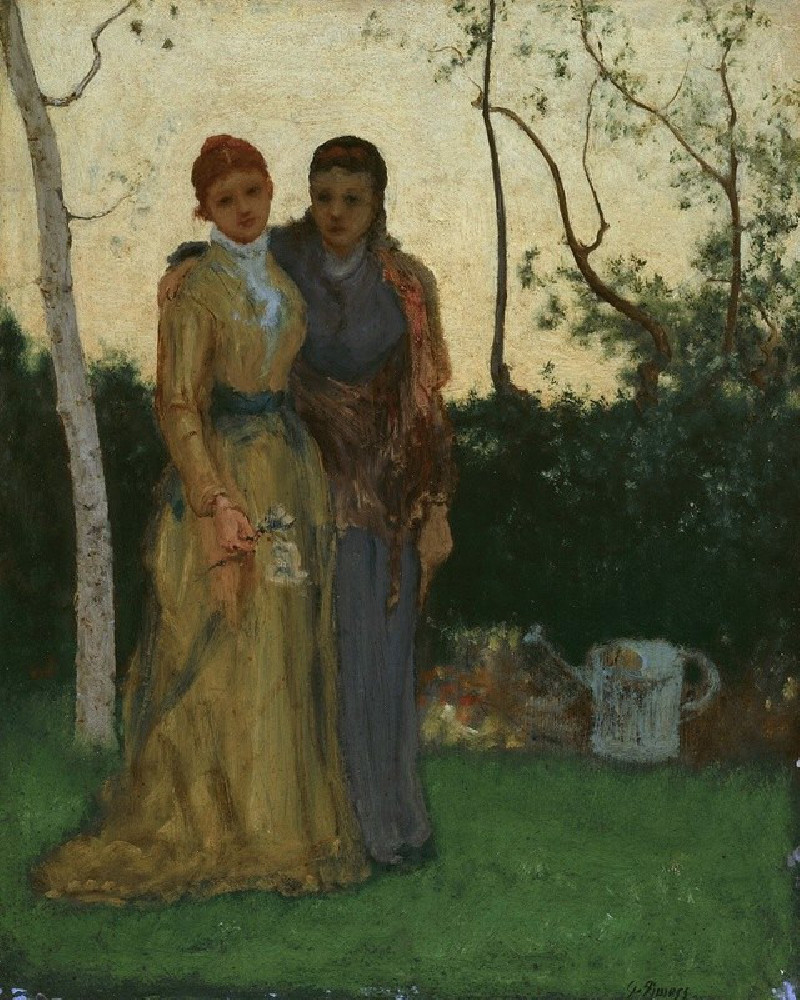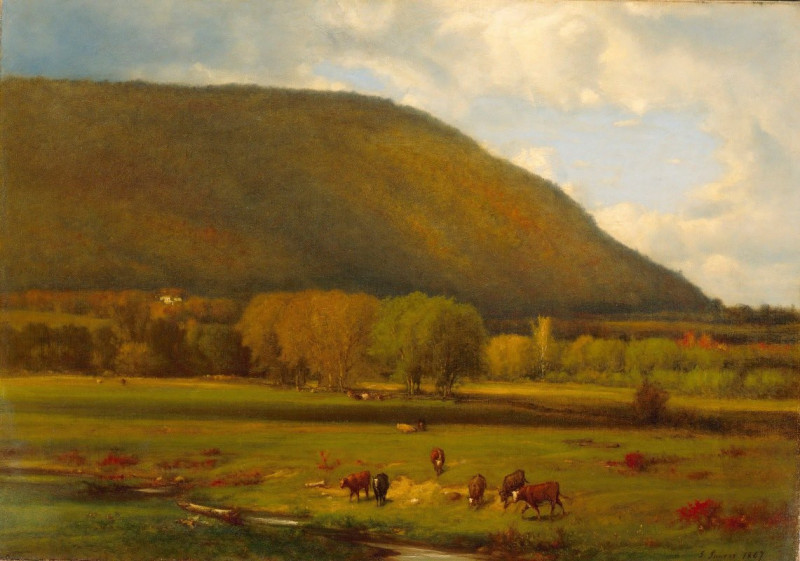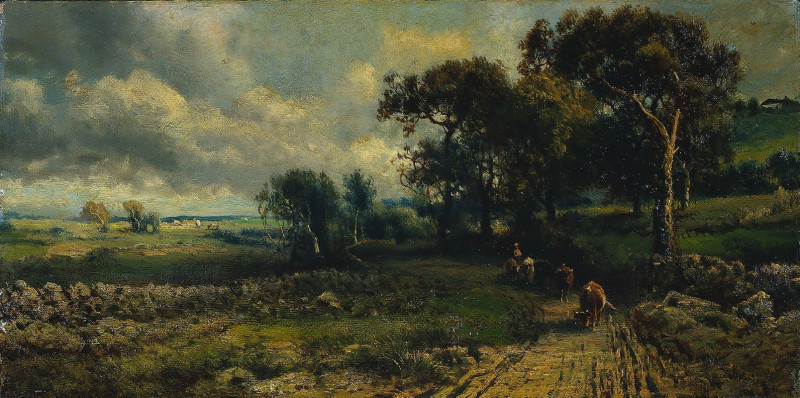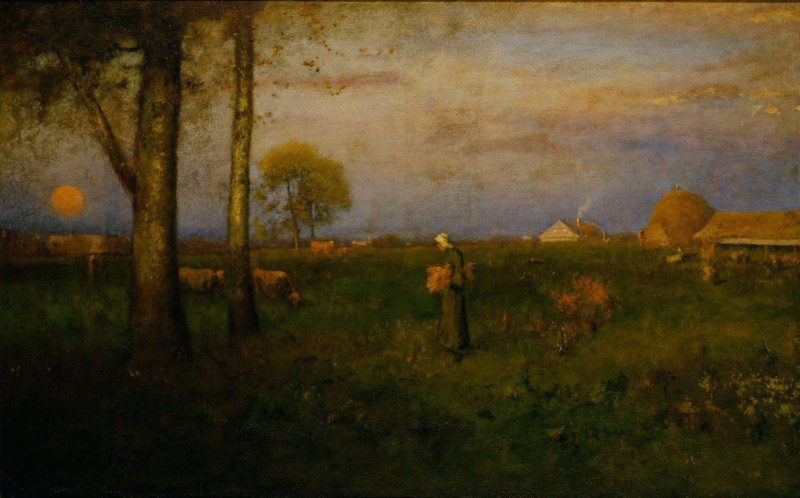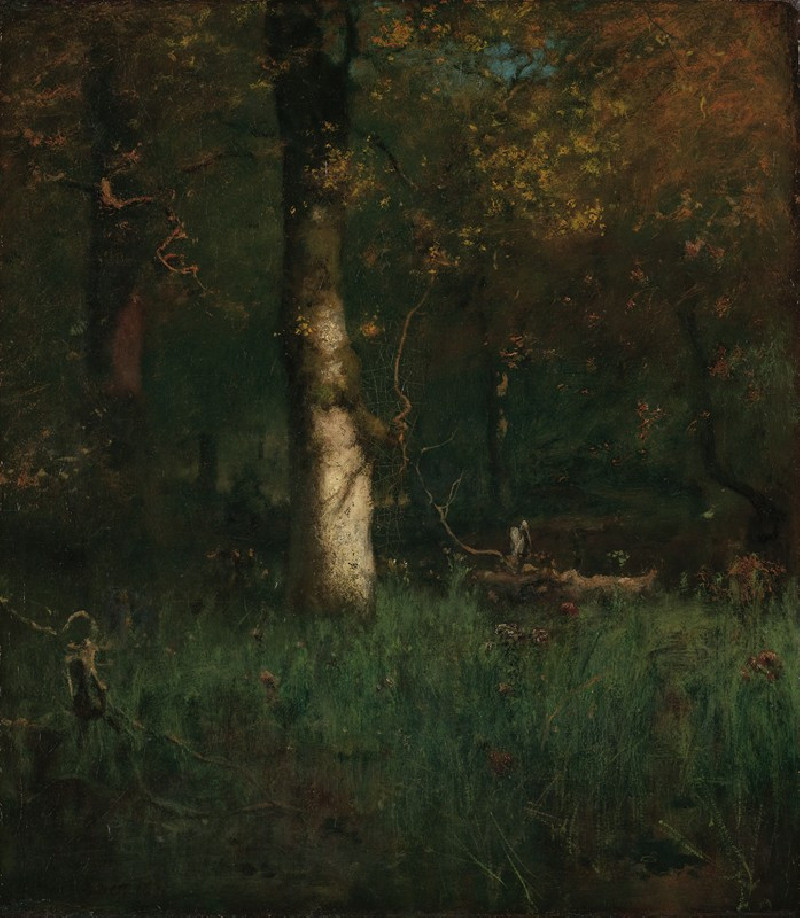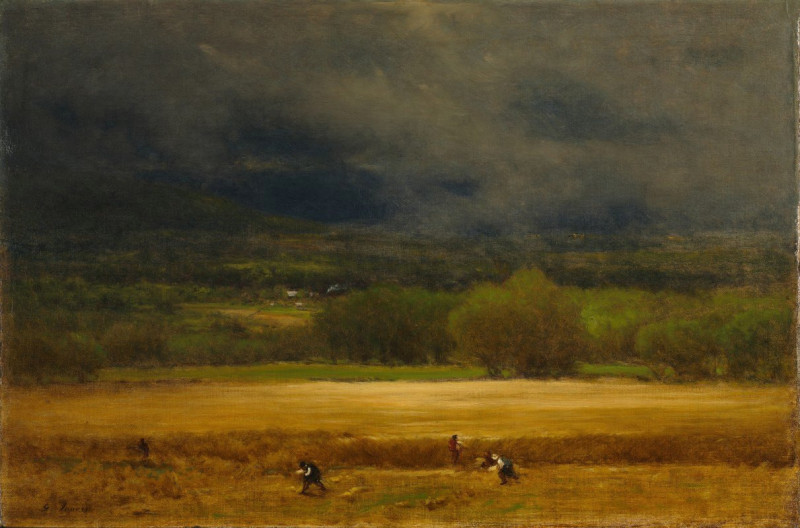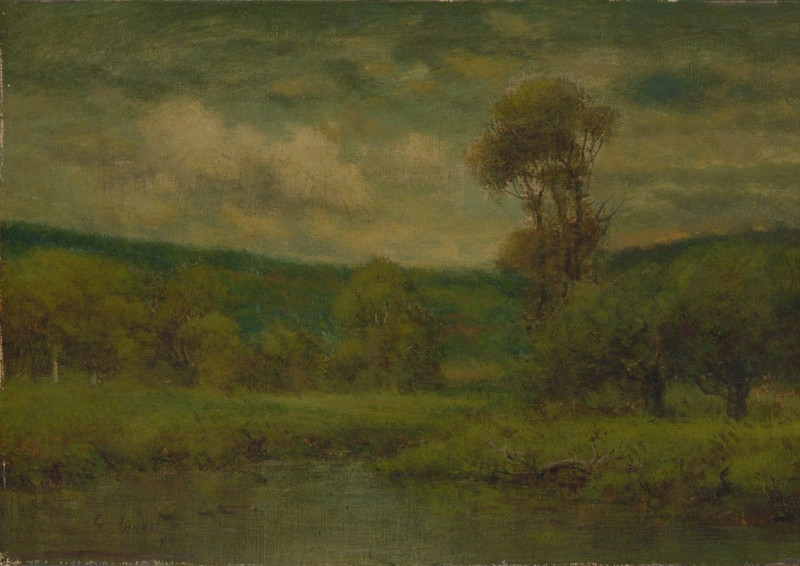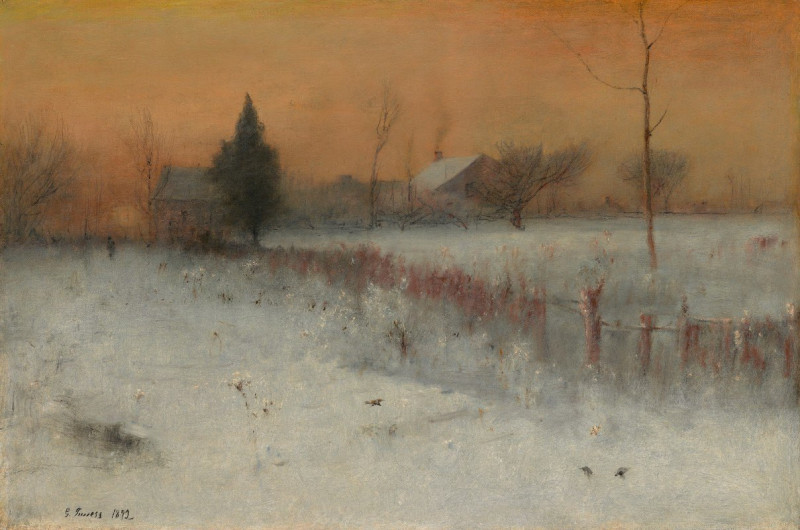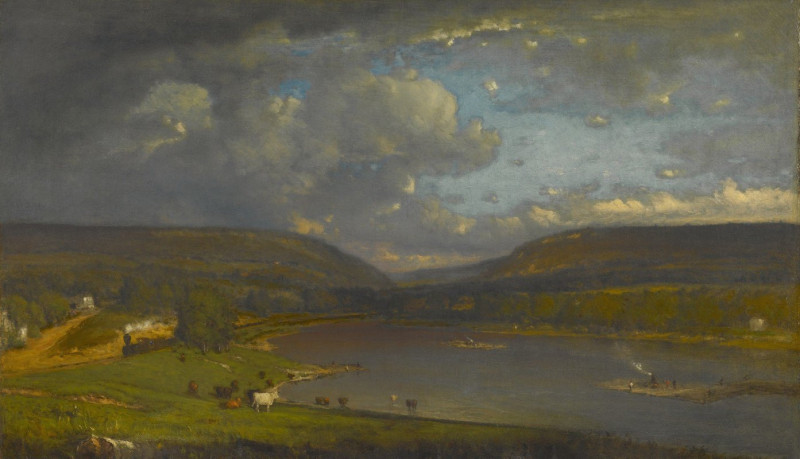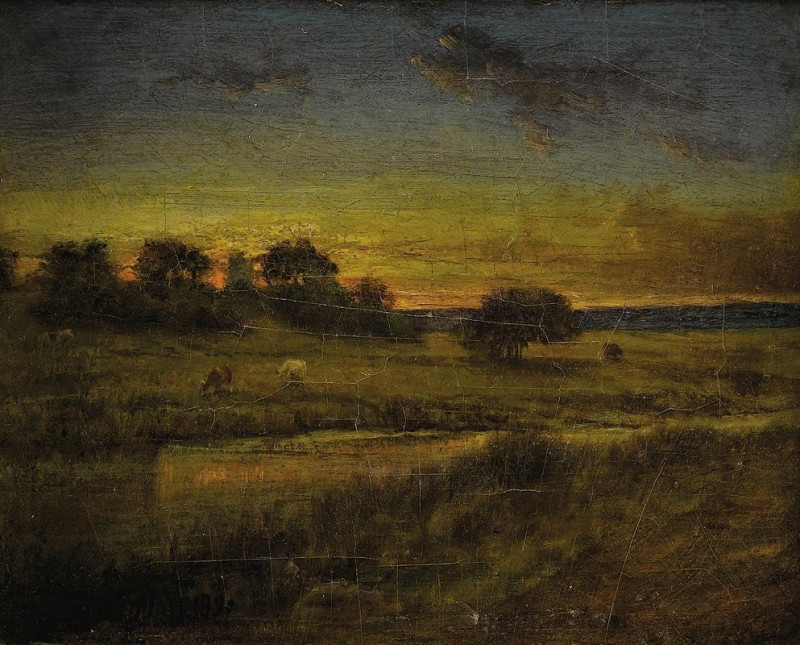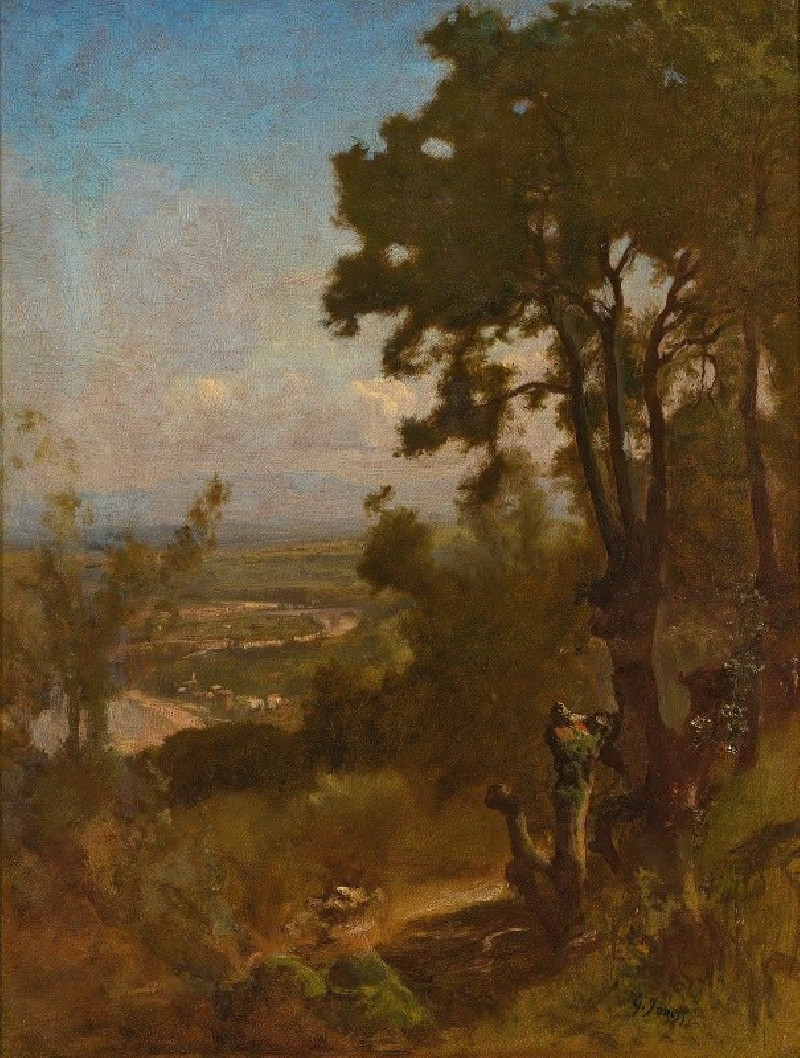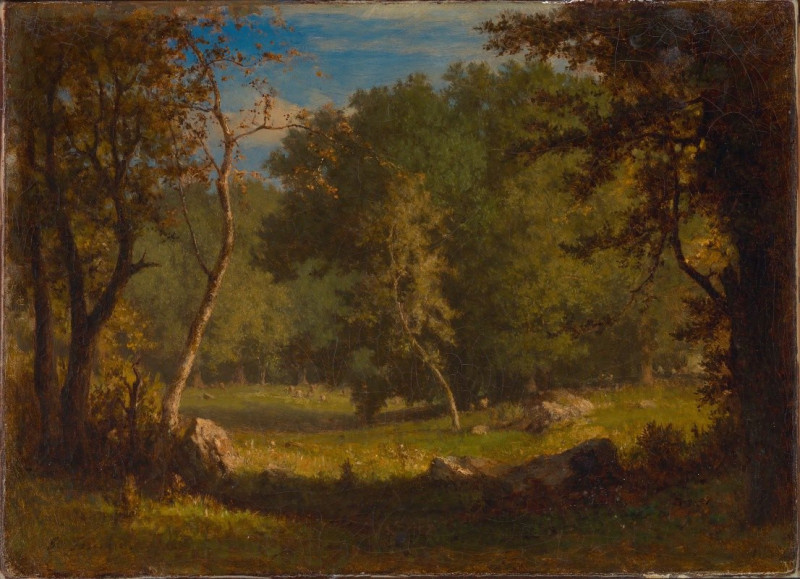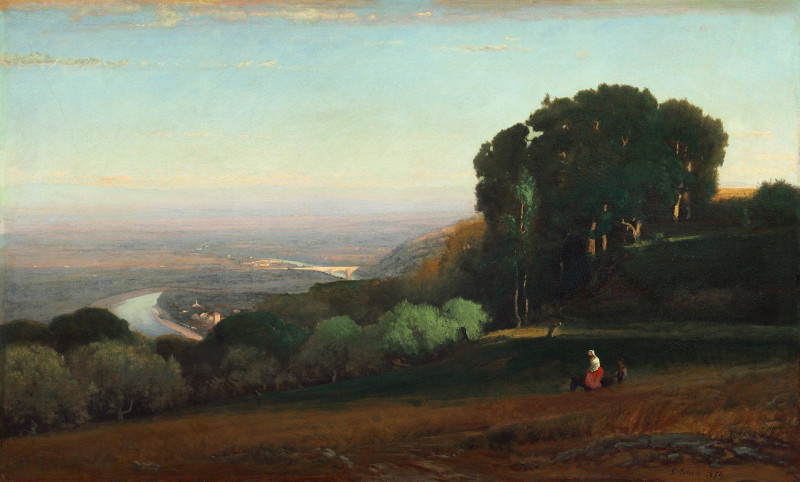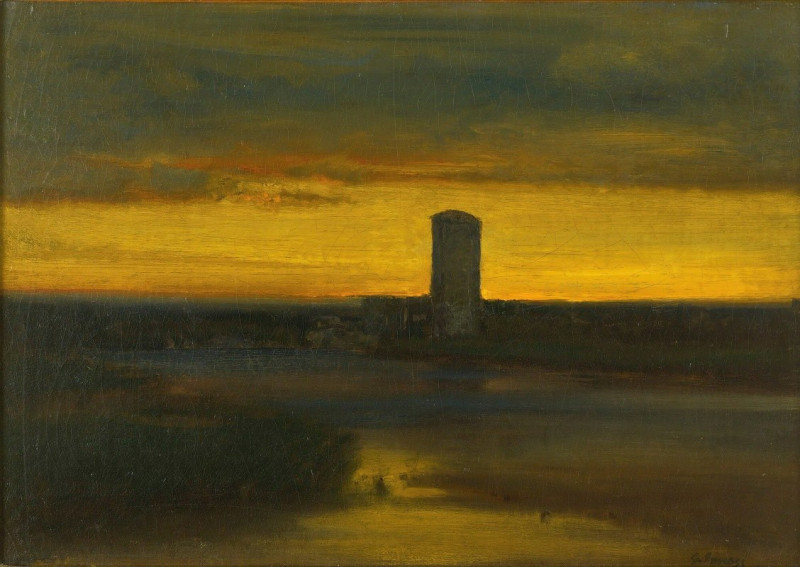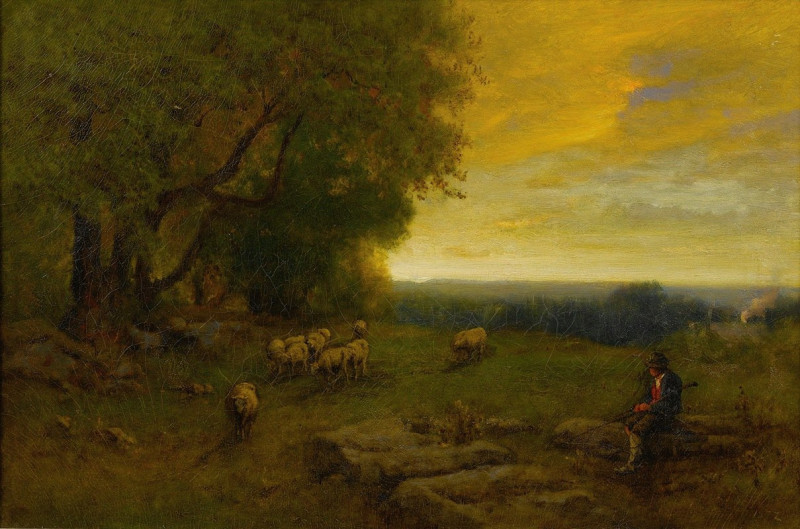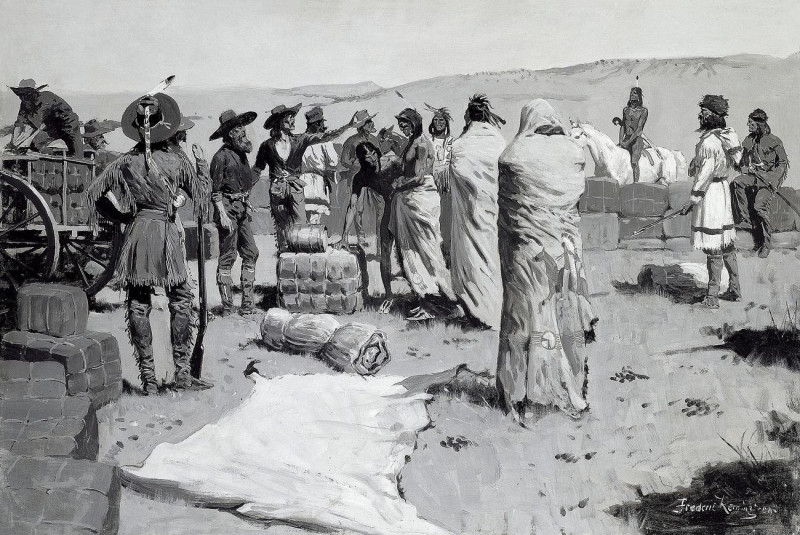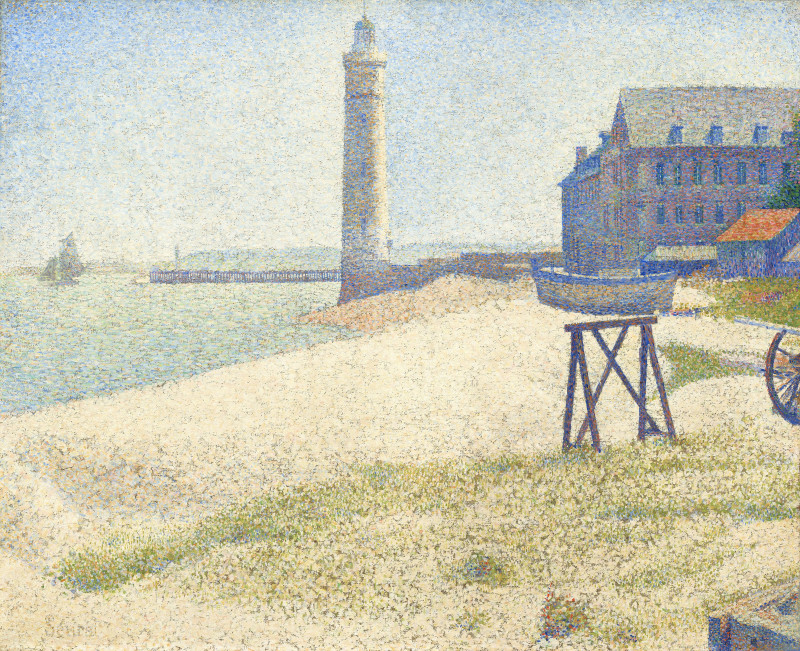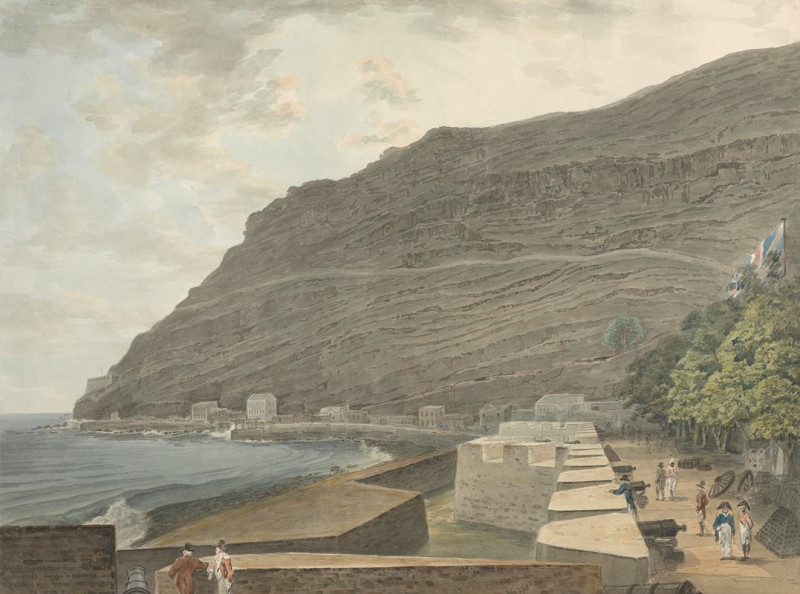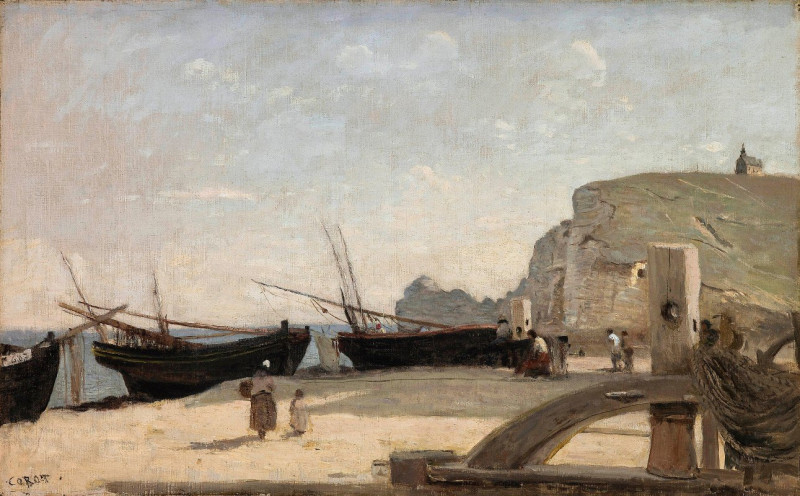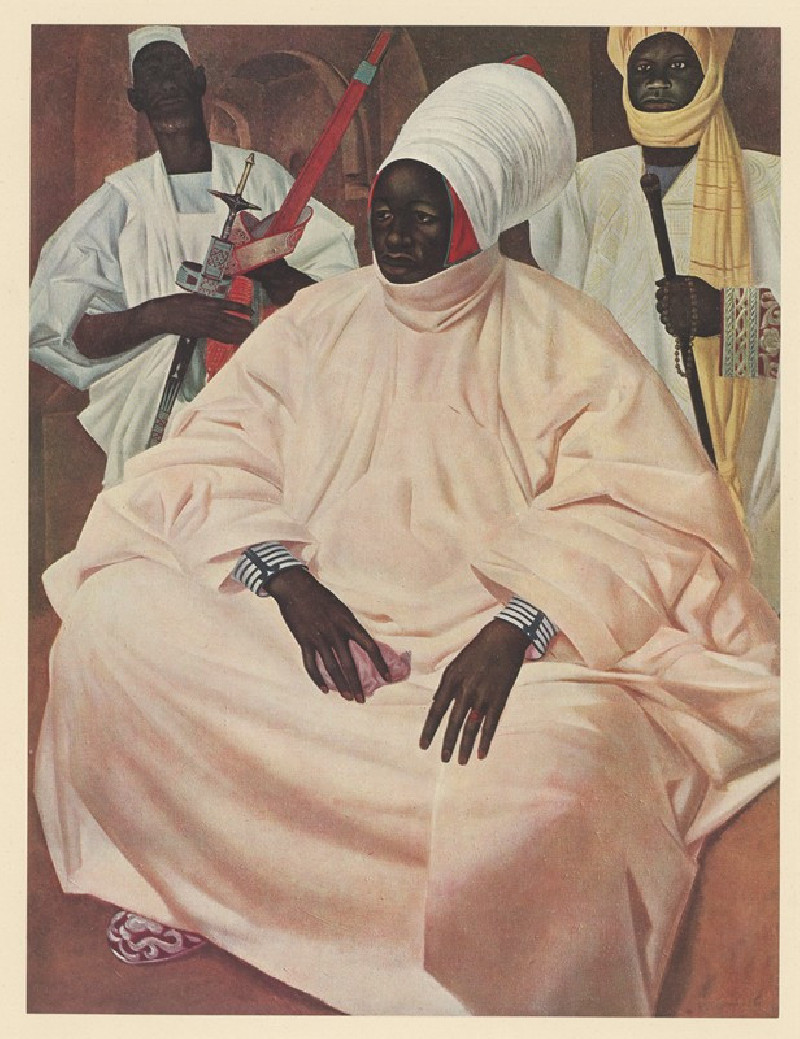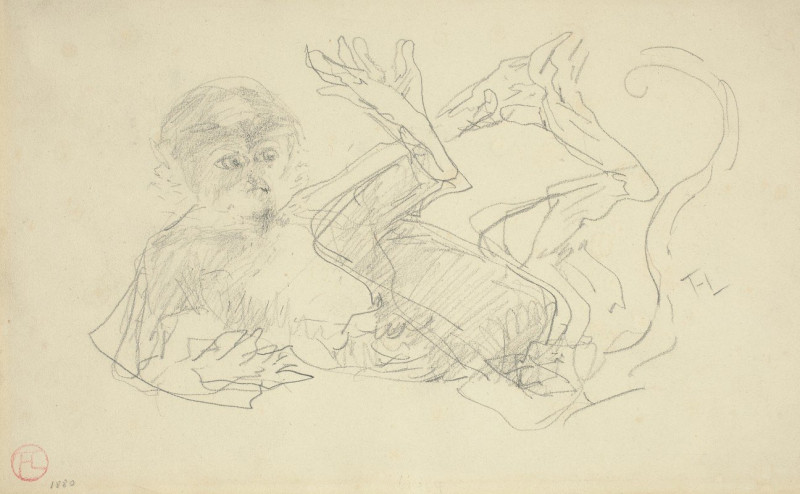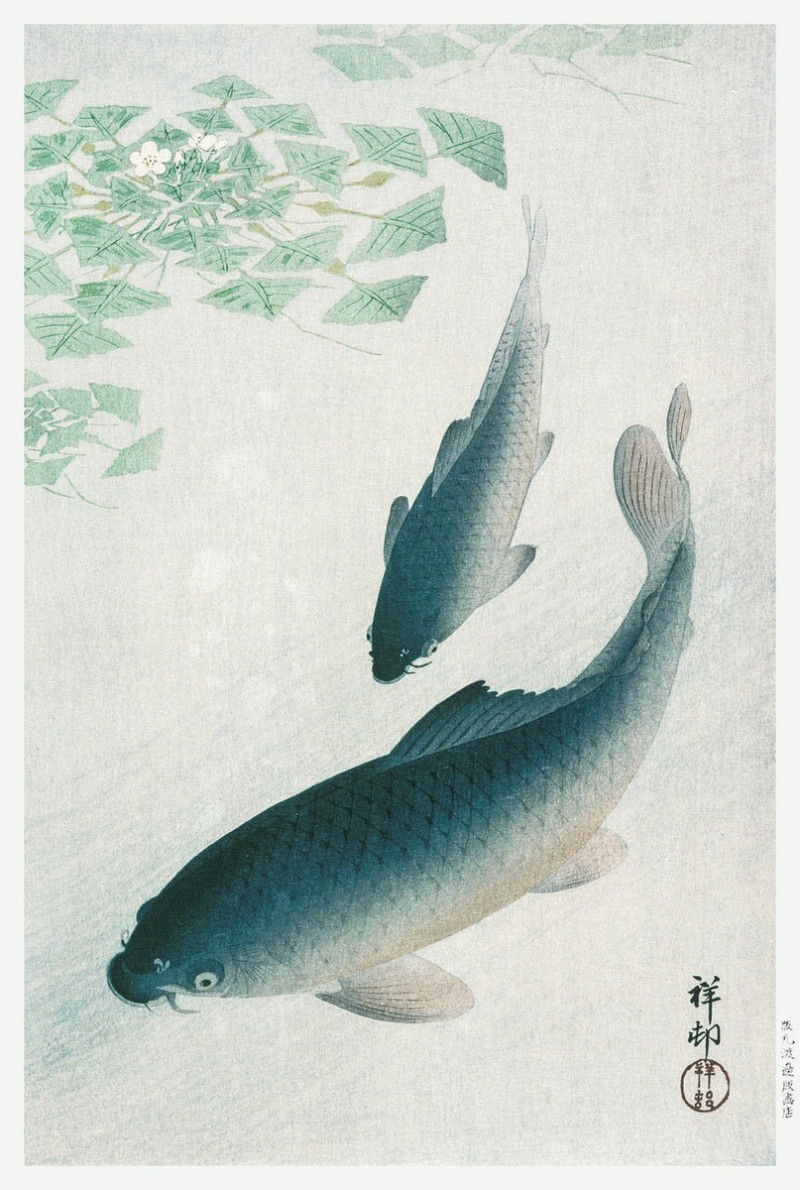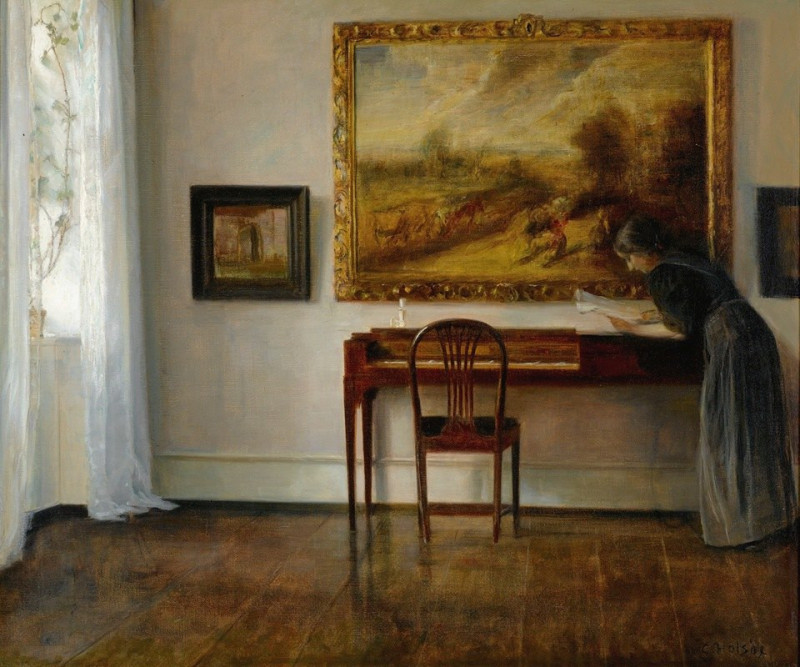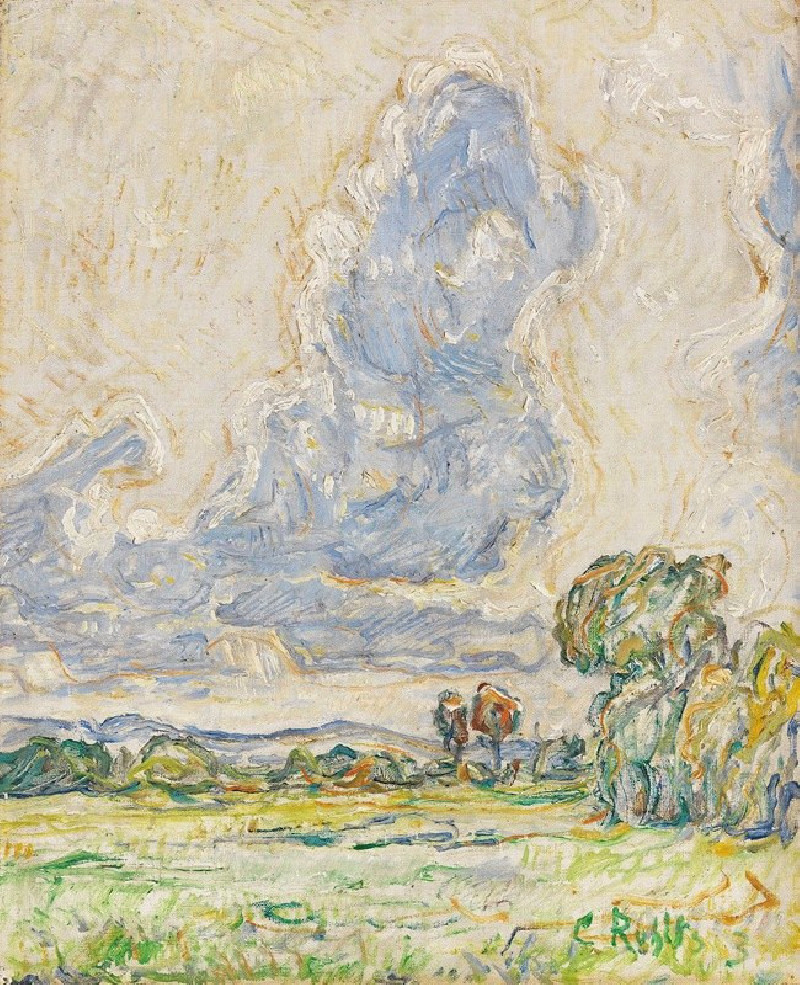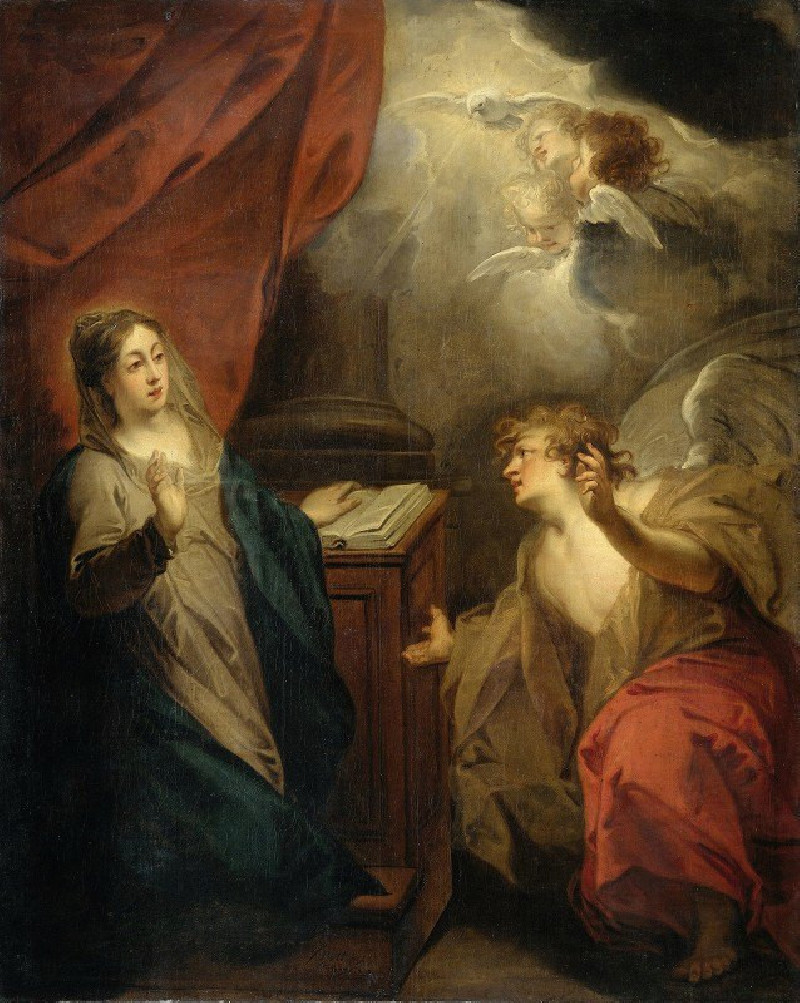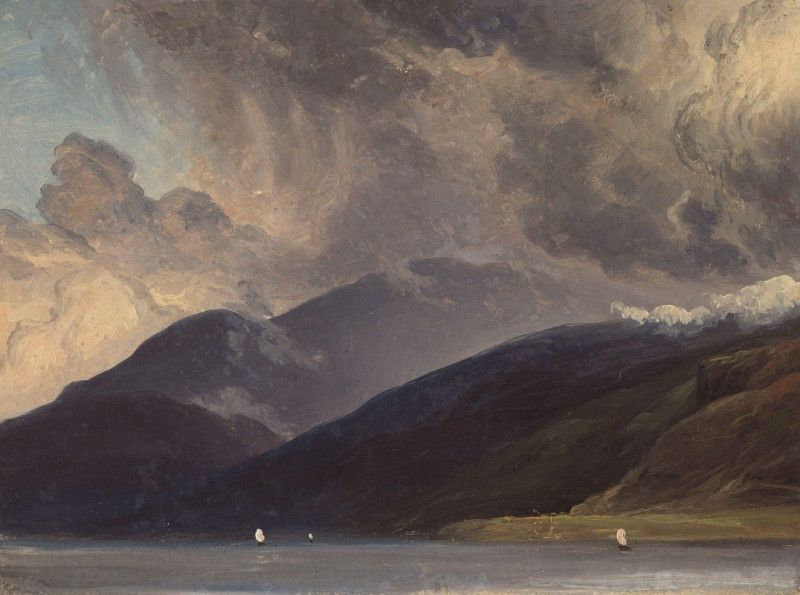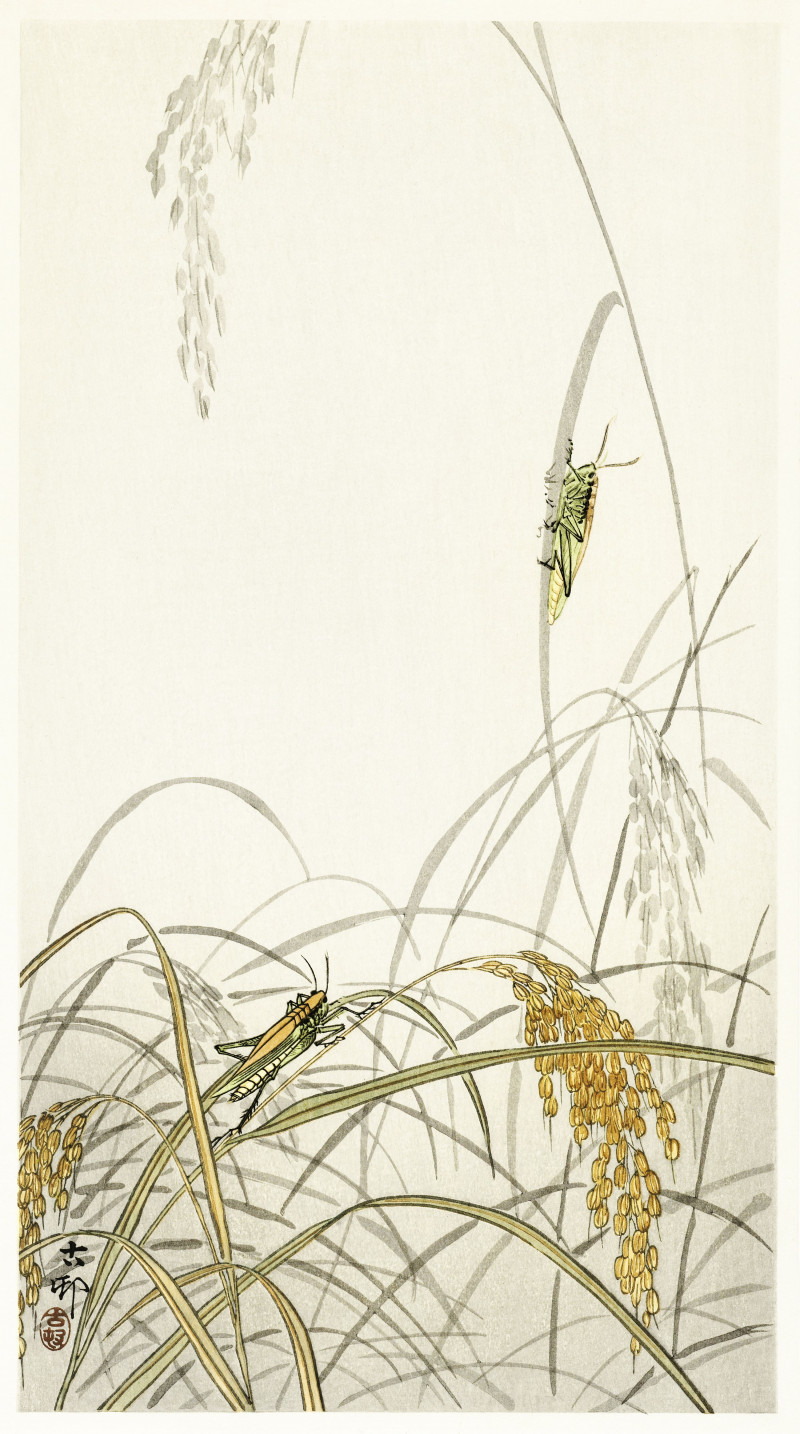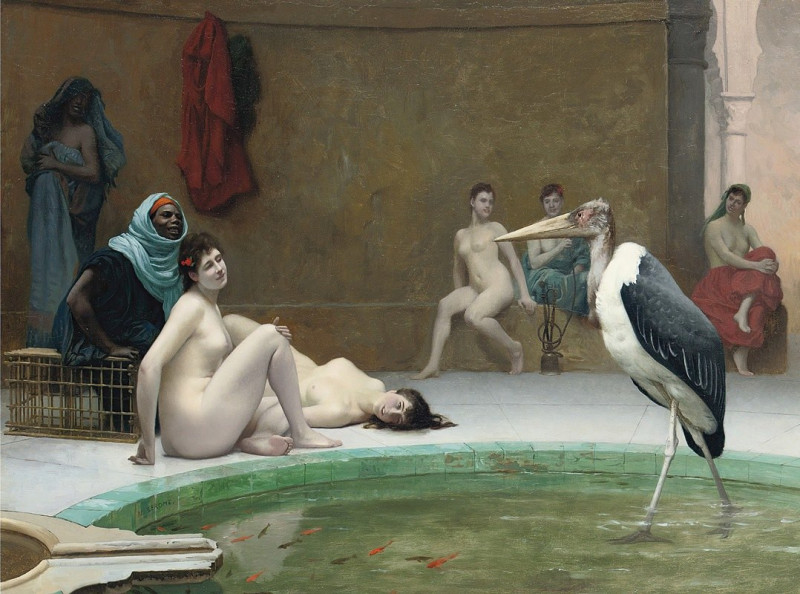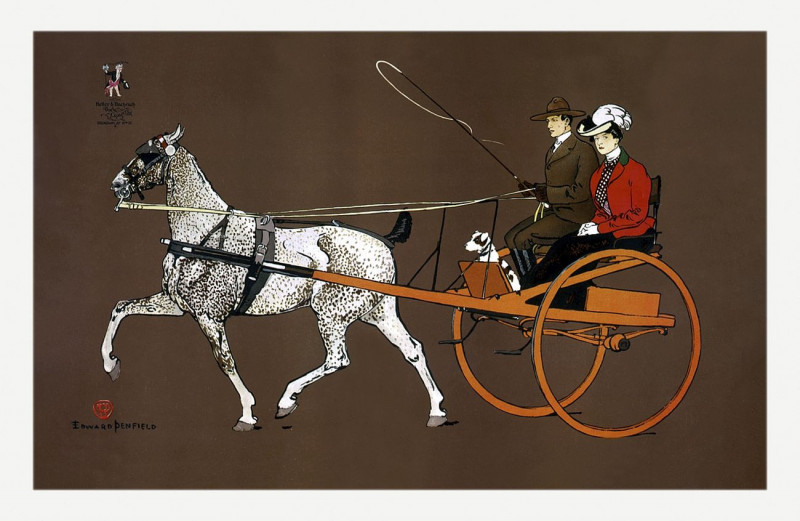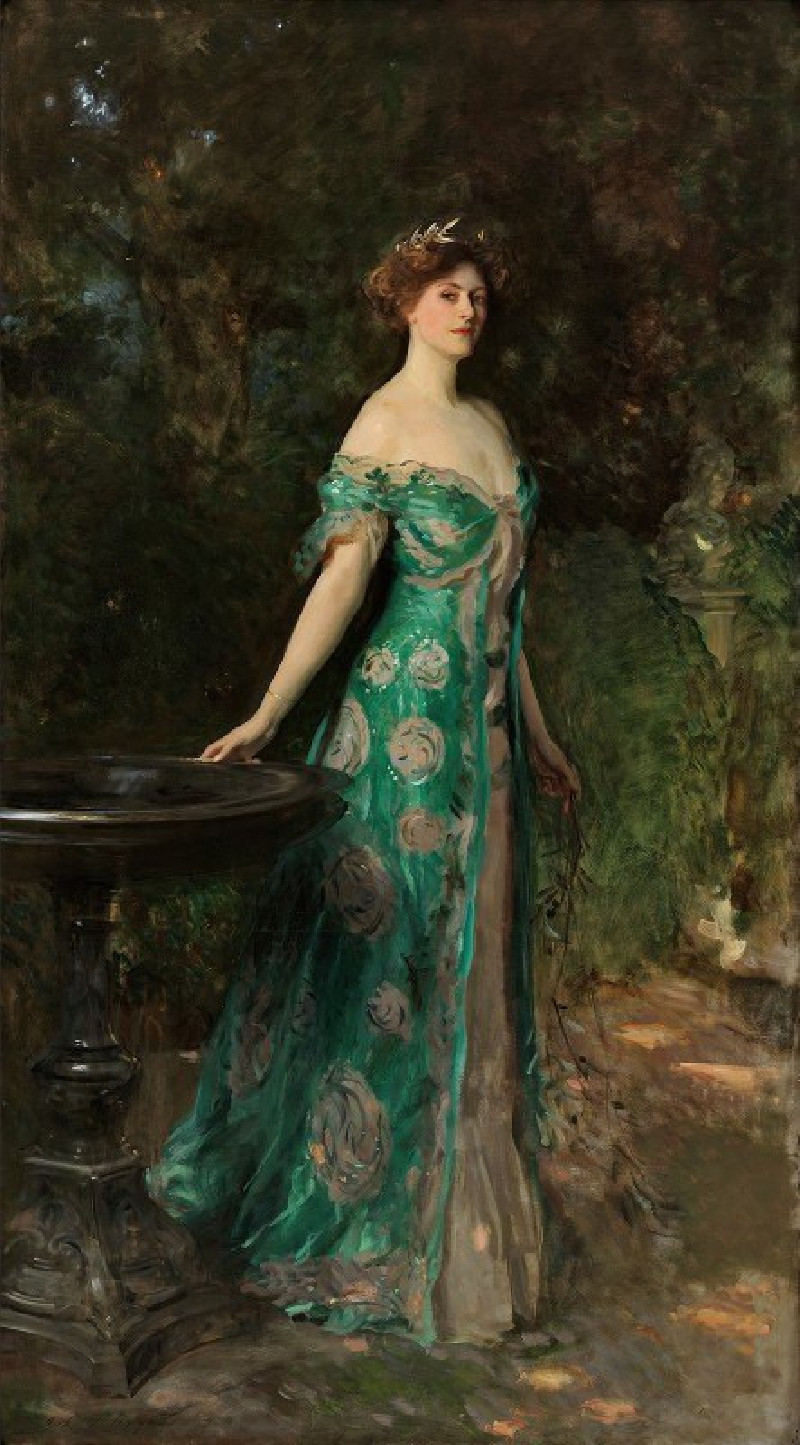Sunset in the Woods (1891)
Technique: Giclée quality print
Recommended by our customers
More about this artwork
Welcome to the evocative landscape of "Sunset in the Woods," a masterful painting completed in 1891 by the renowned American artist George Inness. This painting invites viewers into a muted, poetically dim forest scene bathed in the last gleams of twilight, encapsulating Inness's profound appreciation of the natural world and his unique approach to conveying emotion through the landscape.As you gaze upon "Sunset in the Woods," you are drawn into a dense assembly of trees, where darkness and light whimsically dance around the forms. The foreground features shades of deep browns and greens, crafting a rich tapestry of earthy colors that suggest a feeling of serenity and deep contemplation. Inness is known for his exceptional ability to render the effects of light and color, which are brilliantly manifested here through filtered sunlight that illuminally illuminates parts of the tree trunks, creating striking contrasts against the shadowy forest.In this painting, particularly evident is Inness's skill in atmospheric treatment—the soft focus and subtle graduation of tones imparts an almost mystical quality to the canvas, giving the viewer a sense of both the tangible and the transient aspects of nature.The essence of "Sunset in the Woods" goes beyond simple representation; it is a reflection of Inness's spiritual connection to nature and his belief in the unity of the visible and the divine. This artwork is not just a visual experience; it is an invitation to sink into a moment of introspection amidst the fading light of day, encouraging us to consider the deeper, sublime bonds we share with the natural world.
Delivery
Returns
George Inness (May 1, 1825 – August 3, 1894) was a prominent American landscape painter.
Now recognized as one of the most influential American artists of the nineteenth century, Inness was influenced by the Hudson River School at the start of his career. He also studied the Old Masters, and artists of the Barbizon school during later trips to Europe. There he was introduced to the theology of Emanuel Swedenborg, which was significant for him; he expressed that spiritualism in the works of his maturity (1879–1894).


